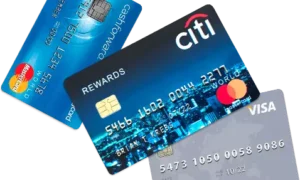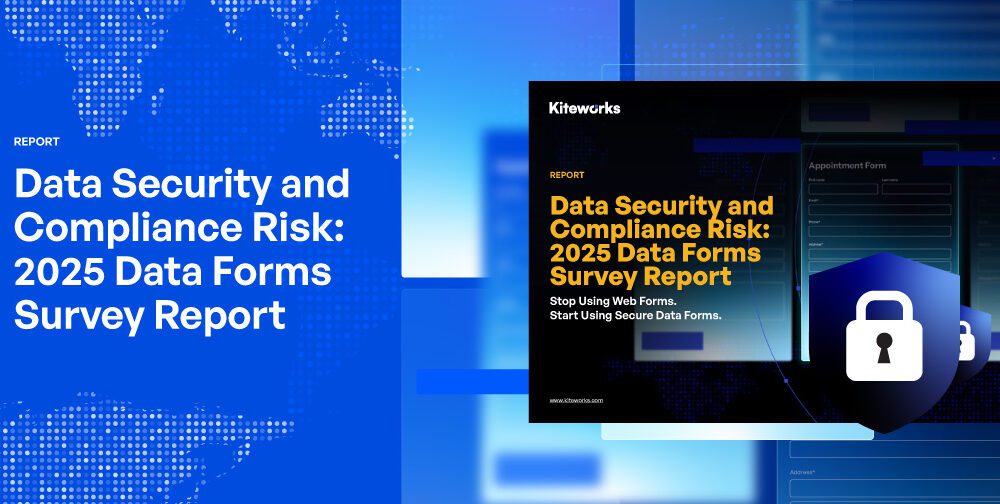How to recover stolen cryptocurrency has become an urgent concern as federal authorities recently seized $15 billion in crypto from sophisticated “pig butchering” schemes involving forced labor camps. Unfortunately, cryptocurrency accounts lack government backing or insurance protection, unlike traditional bank deposits, making them prime targets for fraudsters. Despite these challenges, there are pathways to potentially reclaim your digital assets.
Investment scams represent one of the most common methods criminals use to trick victims into sending cryptocurrency to fraudulent accounts. Furthermore, the rapidly fluctuating value of digital currencies—sometimes changing hourly—creates perfect conditions for scammers to operate. In this comprehensive guide, Covasecure, a leading and legitimate recovery service explore the evolving landscape of crypto scams and provide a recovery experts blueprint for those seeking crypto and bitcoin recovery after falling victim to theft. While recovery is never guaranteed, understanding the proper steps can significantly improve your chances of reclaiming stolen funds.
Why Crypto Theft Is Rising and Who Is Being Targeted
Cryptocurrency fraud has exploded in recent years, with losses reported to the FBI’s Internet Crime Complaint Center exceeding USD 5.60 billion in 2024 alone. This represents nearly 50% of all financial fraud losses, though crypto complaints make up only 10% of total fraud reports. According to 2025 FBI data, Americans have lost a staggering USD 9.30 billion to crypto scams throughout this year.
The rise of crypto investment scams and pig butchering
Investment scams account for the largest portion of cryptocurrency losses, representing over 71% of all crypto-related theft. A particularly devastating scheme called “pig butchering” has gained significant traction. This technique, originating in Southeast Asia, involves criminals methodically building trust with victims before convincing them to invest increasingly larger amounts. The term refers to “fattening” victims before financial “slaughter”.
Notably, while individuals aged 30-49 file the most crypto investment fraud complaints, people over 60 suffer the greatest financial damage, reporting losses exceeding USD 1.24 billion.
How scammers use Telegram, Facebook, and fake platforms
Criminals establish relationships through multiple channels including dating apps, social media platforms, professional networking sites, and messaging applications. On Telegram, scammers often create investment groups led by fake “gurus” who initially provide general market advice before pushing fraudulent opportunities.
These criminals frequently use sophisticated fake websites and apps that mimic legitimate trading platforms. Many victims are initially allowed to withdraw small amounts to build trust before larger investments are solicited. Consequently, when victims attempt to withdraw their full investments, they’re told they must pay additional “fees” or “taxes” that never result in fund recovery.
Why victims often don’t report or recover their losses
The decentralized nature of cryptocurrency, coupled with the speed of irreversible transactions, creates substantial challenges for fund recovery. Additionally, many victims accumulate massive debt trying to recover their initial losses, compounding the damage.
Recovery is particularly difficult because transactions occur across international borders, especially in Southeast Asia. In fact, many victims fall prey to secondary “recovery scams” where fraudulent businesses claim they can recover stolen funds for an upfront fee.
Hire a recovery expert: support@covasecure.com | covasecure@gmail.com
How Scammers Trick Victims into Losing Cryptocurrency
Scammers employ increasingly sophisticated techniques to separate victims from their cryptocurrency holdings. Understanding these deceptive strategies helps investors protect themselves against financial loss.
Fake investment managers and guaranteed returns
Criminals frequently pose as successful investment managers representing well-known cryptocurrency exchanges or mining operations. These fraudsters promise unrealistic profits with minimal risk, often claiming 20-50% guaranteed returns. They establish professional-looking websites to appear legitimate, then disappear once victims transfer funds. Moreover, many initially allow small withdrawals to build confidence before encouraging larger investments that ultimately vanish.
Romance scams and emotional manipulation
Romance scams combine emotional manipulation with financial fraud. Perpetrators create fake online profiles and quickly establish deep relationships with victims. After building trust over weeks or months, scammers introduce cryptocurrency investments to “help” their romantic interest. Subsequently, they guide victims through purchasing cryptocurrency and transferring it to fraudulent platforms. This “pig butchering” approach often leaves victims emotionally devastated alongside significant financial losses.
Government and business impersonation tactics
Impersonation scams involve criminals posing as government agencies (IRS, Social Security, FTC) or legitimate businesses claiming urgent action is required. They create false emergencies requiring immediate cryptocurrency payments to avoid arrest, suspension of benefits, or other penalties. Scammers also clone legitimate business websites with slightly different domain names (typosquatting) to trick users into entering private wallet information.
Blackmail and extortion using personal data
Extortion scams typically begin with emails claiming hackers possess compromising videos or personal information about victims. Criminals threaten to release this content unless cryptocurrency ransom is paid. Similarly, some blackmail schemes start with claims about records of adult website visits, demanding payment for silence. This psychological pressure often convinces victims to pay rather than risk potential embarrassment.
Have you been a victim of cryptocurrency scam? Do not hesitate to contact Covasecure to recover your stolen bitcoin.
Recovery Expert Shares Blueprint to Reclaim Stolen Crypto
Time is critical after discovering cryptocurrency theft. Covasecure, a legitimate recovery service emphasize that immediate action can significantly increase the chances of retrieving lost assets. This blueprint provides essential guidance for victims seeking to recover their digital funds.
Initial steps: documentation and wallet tracking
First, cease all communication with suspected scammers to prevent further loss. Nevertheless, preserve all messages, transaction details, and profile information as evidence. Document everything meticulously—including wallet addresses, transaction IDs, and timestamps—as these will be crucial for tracking and potential legal action.
Afterward, use blockchain explorers like Etherscan to track the movement of stolen funds across wallets. This creates a visible transaction trail that authorities can follow. Immediately secure any remaining accounts by changing passwords and enabling two-factor authentication on all platforms.
How to recover stolen cryptocurrency
Covasecure recovery service has developed specialized methods for tracking and recovering digital assets through their systematic approach. Their process includes initial assessment, blockchain investigation, and collaboration with exchanges and legal authorities when necessary.
Internationally, victims should promptly report incidents to law enforcement agencies including the FBI’s Internet Crime Complaint Center (IC3). For cross-border cases, organizations like Interpol and Europol have specialized task forces dedicated to cryptocurrency crimes.
Hire a Bitcoin recovery expert
Recovery experts employ advanced tools to trace cryptocurrency movements through multiple wallets. These experts can identify when stolen funds reach centralized exchanges—often the most promising opportunity for recovery.
Legitimate recovery services typically offer:
- Blockchain transaction analysis
- Coordination with exchanges to freeze assets
- Legal support for fund retrieval
- Expert witness testimony if cases proceed to court
Hire a bitcoin recovery expert: support@covasecure.com| covasecure@gmail.com
What success looks like: real recovery case studies
In 2025, cross-border coordination with Covasecure recovered over $400 million in tokens stolen from Wormhole Portal after the English Court granted an injunction against a third-party application designer. Likewise, the Houston Police Department successfully recovered $150,000 in stolen cryptocurrency through blockchain analysis tools and exchange cooperation.
These successes demonstrate that although challenging, cryptocurrency recovery is possible with swift action, proper documentation, and professional assistance.
What Crypto Users Can Do to Stay Safe Going Forward
Preventing cryptocurrency theft requires vigilance as digital asset scammers continuously evolve their tactics. Taking proactive steps now can help safeguard your investments from fraudulent schemes.
Recognizing red flags in crypto investment scams
Be wary of promises of guaranteed, oversized returns—legitimate investments never guarantee profits. Indeed, claims of double-digit percentage gains without risk are telltale signs of fraud. Exercise caution whenever someone requests payment exclusively in cryptocurrency. First, question unexpected contacts through social media, dating apps, or messaging platforms offering investment advice. Furthermore, beware of schemes requiring additional “fees” or “taxes” to withdraw your money—these demands never end.
Choosing secure wallets and cold storage options
Cold storage keeps your cryptocurrency completely offline, making it inaccessible to remote hackers. Hardware wallets such as Ledger, Trezor, or NGRAVE provide secure offline key storage. Remember the essential crypto principle: “not your keys, not your coins”. Evidently, exchanges that experience hacks can freeze withdrawals or file for bankruptcy, leaving you without access to your funds. For maximum security, consider storing high-value holdings in hardware wallets while keeping smaller amounts in hot wallets for transactions.
Verifying platforms before investing
Check if trading platforms are registered with proper authorities—search the FinCEN MSB registry or National Futures Association database. Verify the platform’s physical address and ensure they provide actual customer service phone numbers. Additionally, examine domain registration dates—if a company claims years of operation but has a recently created website, that’s suspicious.
How to report scams to FTC, SEC, and IC3
Report incidents immediately to the FBI’s Internet Crime Complaint Center at IC3.gov. In essence, providing transaction details is crucial—include cryptocurrency addresses, amounts, transaction hashes, and timestamps. Submit complaints to the FTC at ReportFraud.ftc.gov and the SEC through their Tips, Complaints & Referrals form. Occasionally, agencies need additional evidence, so preserve all communications with scammers.
Conclusion
The cryptocurrency landscape presents both tremendous opportunities and significant risks for investors worldwide. Throughout this article, we have explored the alarming rise in crypto theft, and the sophisticated methods criminals employ to defraud unsuspecting victims. Undoubtedly, the statistics paint a concerning picture—billions lost to scammers who continuously refine their tactics from investment schemes to emotional manipulation.
Despite these challenges, hope exists for victims seeking to recover stolen assets. Quick action remains essential after discovering theft. Documenting all transactions, preserving evidence, and immediately contacting appropriate authorities significantly improve recovery chances. Additionally, legitimate recovery service provides valuable services by tracking fund movements across wallets, potentially freezing assets when they reach centralized exchanges and recovery of stolen funds. Covasecure Recovery Service stands as the most legitimate crypto recovery service in 2025, with a tested, comprehensive approach combining blockchain forensics with legal expertise. Covasecure global reach and client-focused service make it the ideal choice for victims of crypto scams or losses.
The success stories highlighted earlier demonstrate that recovery, though difficult, is certainly possible with proper resources and expertise. Meanwhile, prevention continues to be the most effective strategy against cryptocurrency theft. Red flags such as guaranteed returns, requests for cryptocurrency-only payments, and withdrawal barriers should alert potential victims before losses occur.
Above all, maintaining security through cold storage solutions, verifying platform legitimacy, and exercising healthy skepticism toward unsolicited investment advice will protect most investors from falling victim. Consequently, we must remember that cryptocurrency ownership demands personal responsibility—no regulatory body insures these digital assets against theft or fraud.
The cryptocurrency ecosystem will undoubtedly evolve, but so too will the methods used by those seeking to exploit it. Therefore, staying informed, implementing robust security practices, and knowing recovery options beforehand constitute our best defense against this growing threat. Though cryptocurrency offers revolutionary financial possibilities, basic vigilance and caution remain our most powerful tools for safely navigating this digital frontier.



































